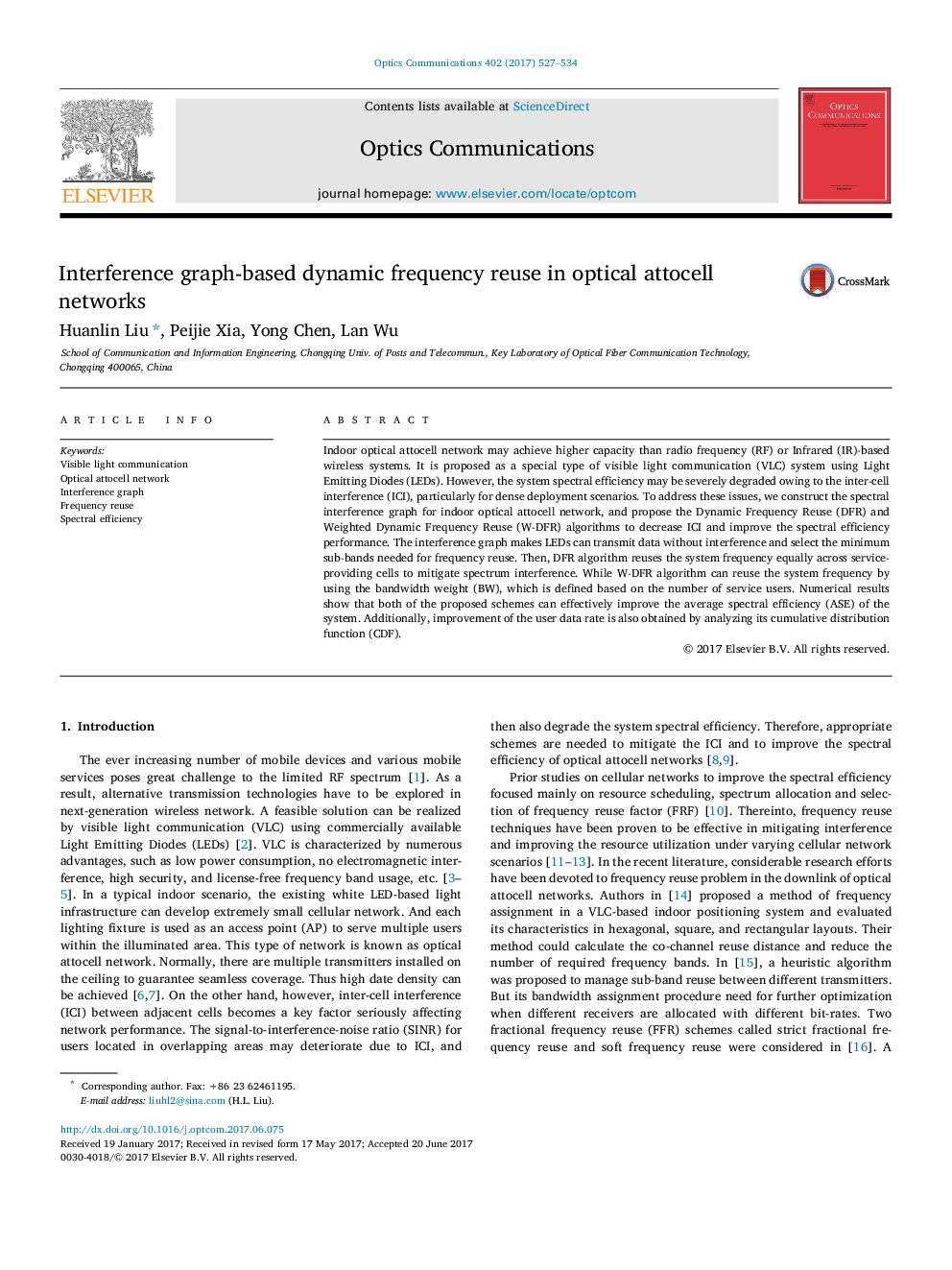| Article ID | Journal | Published Year | Pages | File Type |
|---|---|---|---|---|
| 5449065 | Optics Communications | 2017 | 8 Pages |
Abstract
Indoor optical attocell network may achieve higher capacity than radio frequency (RF) or Infrared (IR)-based wireless systems. It is proposed as a special type of visible light communication (VLC) system using Light Emitting Diodes (LEDs). However, the system spectral efficiency may be severely degraded owing to the inter-cell interference (ICI), particularly for dense deployment scenarios. To address these issues, we construct the spectral interference graph for indoor optical attocell network, and propose the Dynamic Frequency Reuse (DFR) and Weighted Dynamic Frequency Reuse (W-DFR) algorithms to decrease ICI and improve the spectral efficiency performance. The interference graph makes LEDs can transmit data without interference and select the minimum sub-bands needed for frequency reuse. Then, DFR algorithm reuses the system frequency equally across service-providing cells to mitigate spectrum interference. While W-DFR algorithm can reuse the system frequency by using the bandwidth weight (BW), which is defined based on the number of service users. Numerical results show that both of the proposed schemes can effectively improve the average spectral efficiency (ASE) of the system. Additionally, improvement of the user data rate is also obtained by analyzing its cumulative distribution function (CDF).
Related Topics
Physical Sciences and Engineering
Materials Science
Electronic, Optical and Magnetic Materials
Authors
Huanlin Liu, Peijie Xia, Yong Chen, Lan Wu,
